1 Take some photos of asphalt pavement in MO at least 3 show
Solution
Asphalt Pavement Distress Summary Contents
Choose from listFatigue/Alligator CrackingBlock CrackingEdge/Joint CracksRavellingBleedingDepressionsCorrugationsAlligator CracksDry Surface/CrrackingSlippage CracksRuttingLoss of Aggregate on Surface TreatmentsLongitudinal StreakingMoisture Damage (stripping)Transverse Uniform Crack Spaces
TYPE OF DISTRESS
POSSIBLE CAUSE
MAINTENANCE SUGGESTIONS
Fatigue (Alligator) Cracking
Excessive loading
Weak surface, base, or subgrade
Thin surface or base
Poor drainage
Any combination of 1-4
Full-depth patch
Block Cracking
Old and dried out mix
Mix was placed too dry
Fine aggregate mix with low penetration asphalt & absorptive aggregates
Aggravated by low traffic volume
Any surface treatment or thin overlay
Edge Cracks
Lack of lateral support
Settlement of underlying material
Shrinkage of drying out soil
Weak base or subgrade layer
Poor drainage
Frost heave
Heavy traffic or vegetation along edge
Improve drainage. Remove vegetation close to edge. Fill cracks with asphalt emulsion slurry or emulsified asphalt
Crack seal/fill
Top Contents
TYPE OF DISTRESS
POSSIBLE CAUSE
MAINTENANCE SUGGESTIONS
Longitudinal (Linear) & Transverse Cracking
Poorly constructed paving joint crack
Shrinkage of the asphalt layer
Daily temperature cycling
Cracks in an underlying layer that reflect up through the pavement
Longitudinal segregation caused by the improper operation of the paver
Improve drainage by removing the source that traps the water
Seal crack or fill with asphalt emulsion slurry or light grade of asphalt mixed with fine sand.
Provide side drainage ditches
Crack seal/fill
Reflection Cracking
Differential movement between the asphalt and concrete layers
Can deteriorate further under heavy traffic
Crack seal/fill
Slippage Cracks
Lack of a good bond between surface layer and the course beneath due to dust, oil, dirt, rubber, water and other non-adhesive material
Tack coat has not been used
Mixture has a high sand content
Vehicular turning or stopping movements in pavements with a low-strength surface mix
Partial or full-depth patch
Top Contents
TYPE OF DISTRESS
POSSIBLE CAUSE
MAINTENANCE SUGGESTIONS
Corrugations & Shoving
Mixtures too high in asphalt
Low air voids
Fine aggregate content too high
Excessive moisture or contamination in the granular base
Smooth or rounded aggregate
Incorrect asphalt grade
Deep or full-depth patch
Rutting
Consolidation or lateral movement of any of the pavement layers or the subgrade under traffic
Insufficient design thickness
Lack of compaction
Weaknesses in the pavement layers due to moisture infiltration
Weak asphalt mixtures
Cold mill and overlay or thin surface patch
6. Settlement/Grade Depressions
Settlement or failure in the lower pavement layers
Improper construction techniques
Cold mill and overlay
Thin surface patch
TYPE OF DISTRESS
POSSIBLE CAUSE
MAINTENANCE SUGGESTIONS
Corrugations & Shoving
Click image to view larger
Mixtures too high in asphalt
Low air voids
Fine aggregate content too high
Excessive moisture or contamination in the granular base
Smooth or rounded aggregate
Incorrect asphalt grade
Deep or full-depth patch
Rutting
Click image to view larger
Consolidation or lateral movement of any of the pavement layers or the subgrade under traffic
Insufficient design thickness
Lack of compaction
Weaknesses in the pavement layers due to moisture infiltration
Weak asphalt mixtures
Cold mill and overlay or thin surface patch
6. Settlement/Grade Depressions
Click image to view larger
Settlement or failure in the lower pavement layers
Improper construction techniques
Cold mill and overlay
Thin surface patch
Infrared patch
Top Contents
TYPE OF DISTRESS
POSSIBLE CAUSE
MAINTENANCE SUGGESTIONS
Upheaval/Swell
Click image to view larger
Expansive soils (which swell in the presence of moisture)
Frost heave (in which ice lenses grow beneath the pavement, causing the pavement to crack)
Full-depth patch
Utility Cuts/Patch Failure
Click image to view larger
A portion of a pavement has been removed and replaced
A portion of a pavement where additional material has been added
Poor installation techniques such as inadequate compaction, inferior or improper materials
Failure of the surrounding or underlying pavement
Replace patch with deep or full-depth patch
Pot Hole
Click image to view larger
Continued deterioration of another type of distress, such as thawing of a frozen subgrade, cracking, raveling, or a failed patch after pieces of the original pavement surface have been dislodged
Poor surface mixtures
Weak spots in the base or subgrade
Severity of the surrounding distress and traffic action accelerate potholes
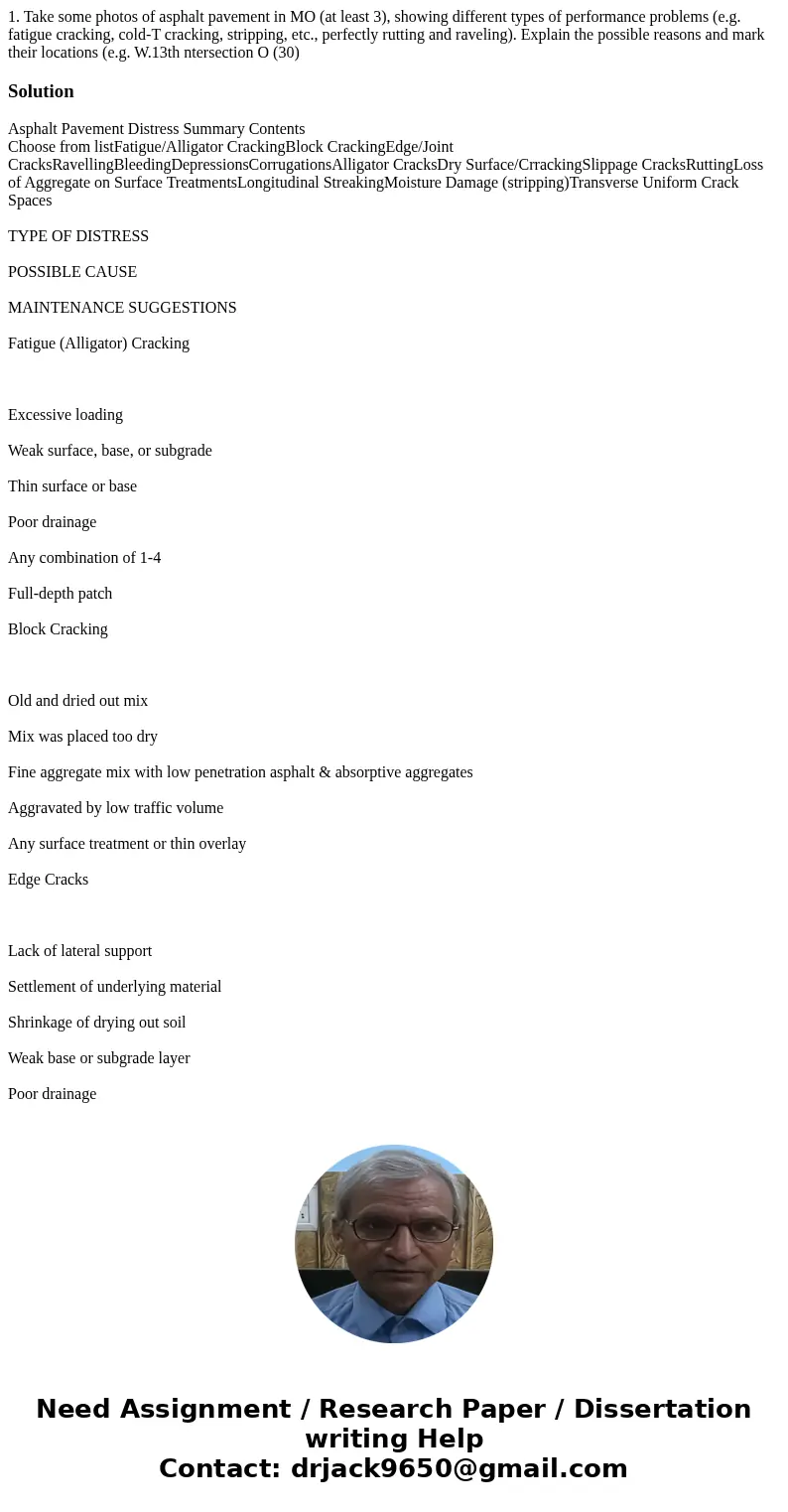
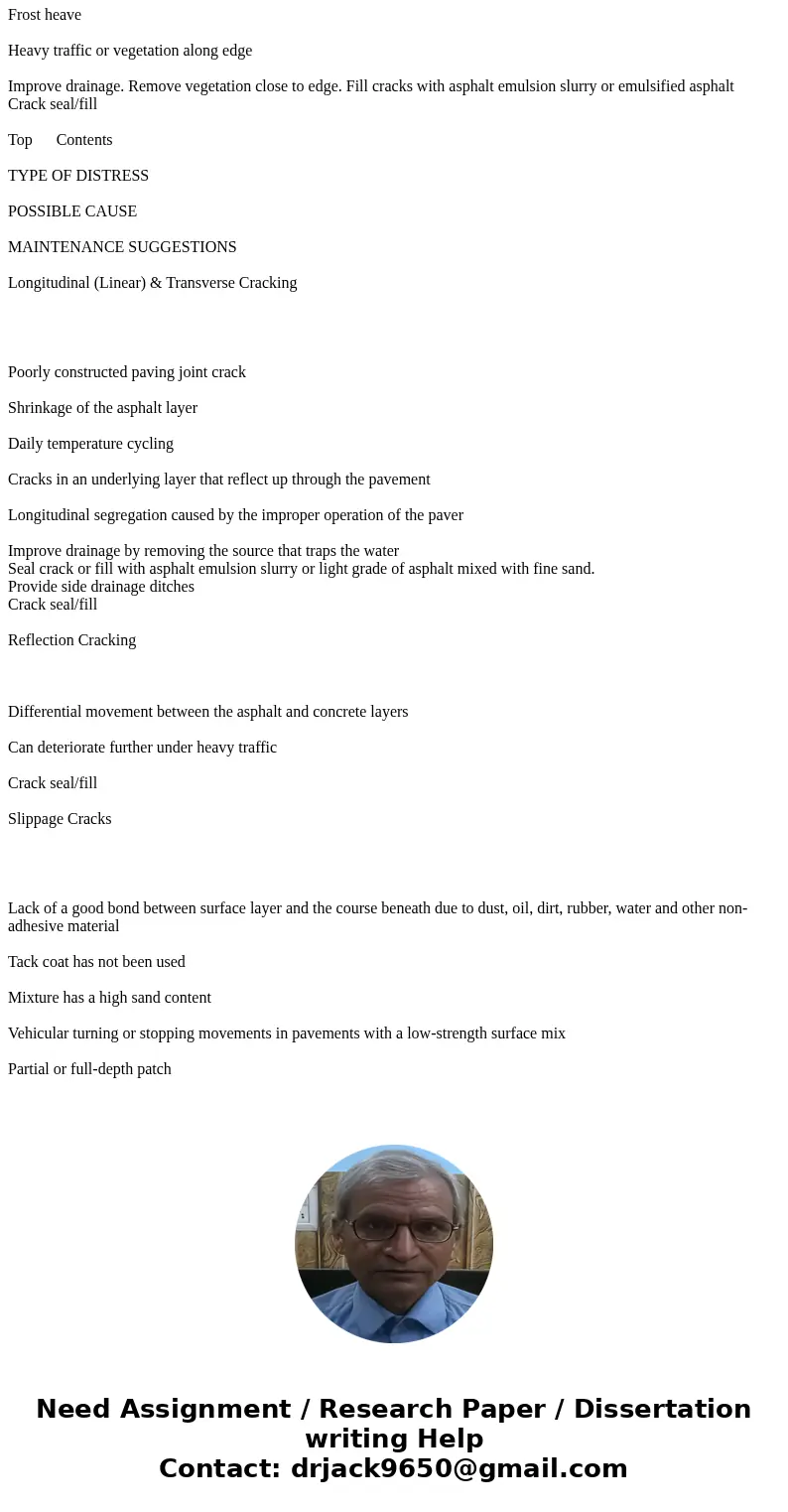
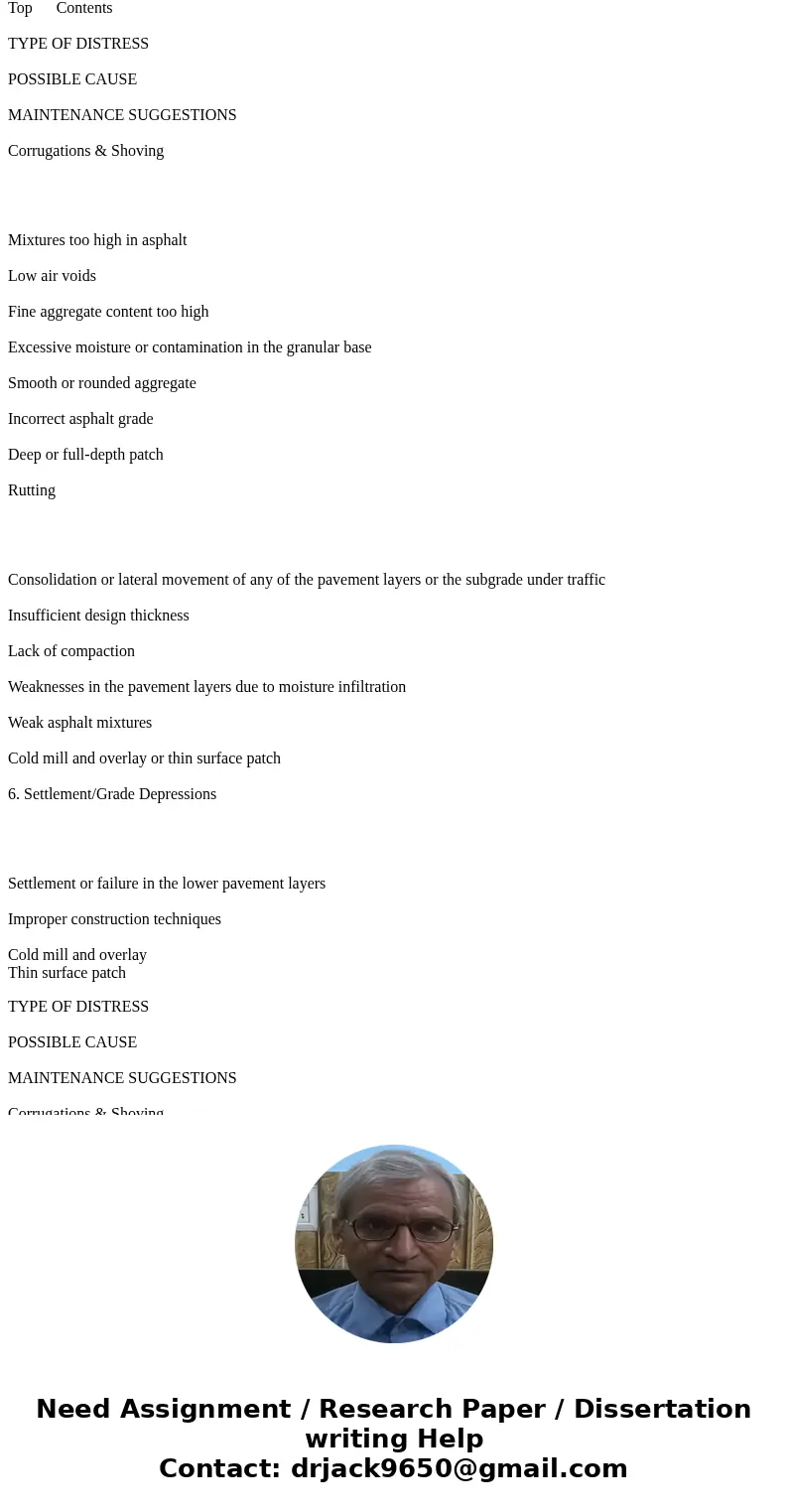
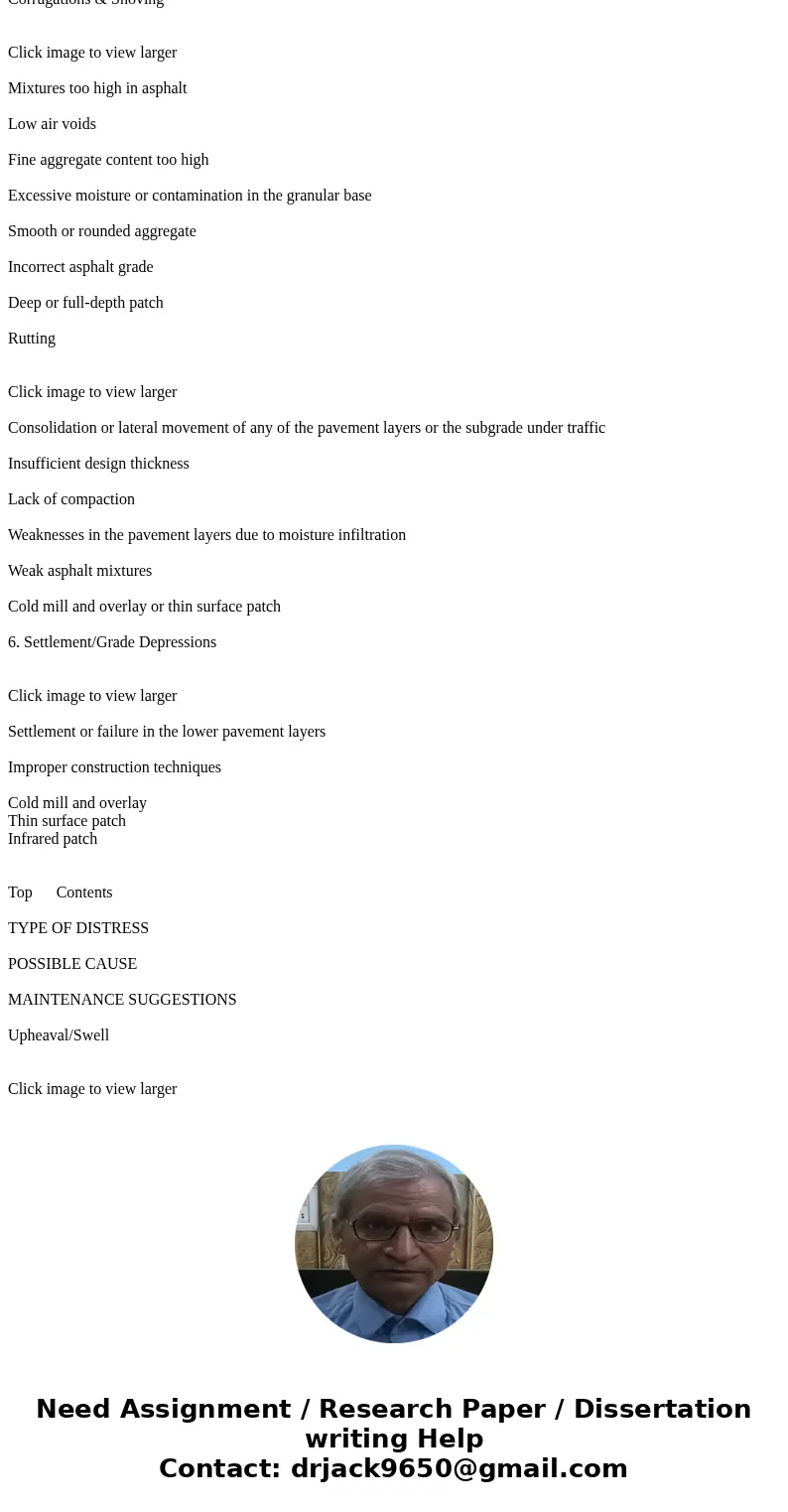
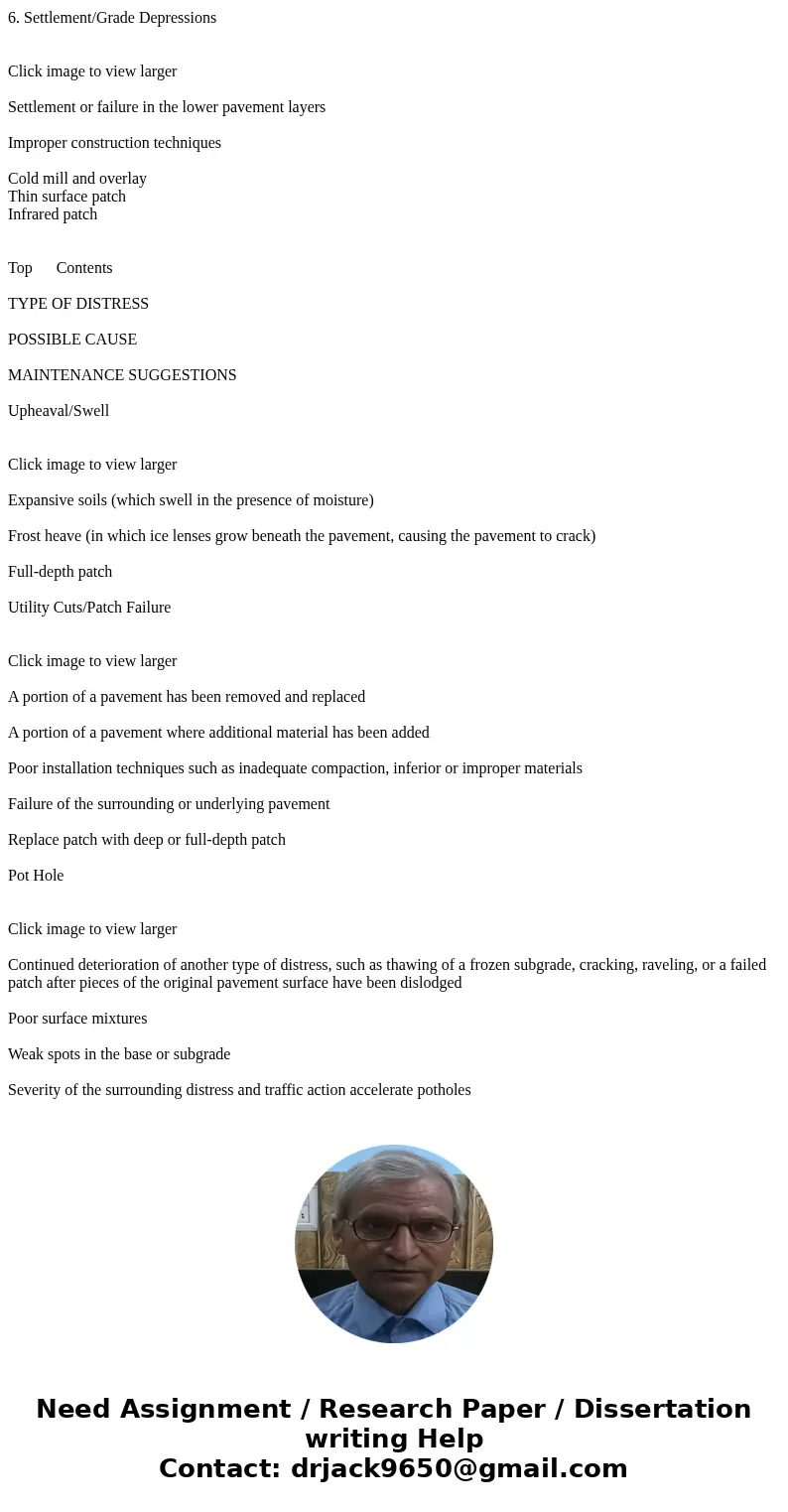
 Homework Sourse
Homework Sourse